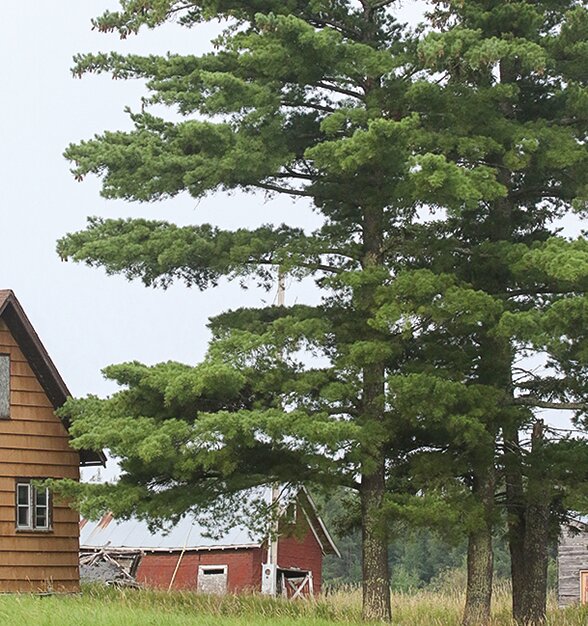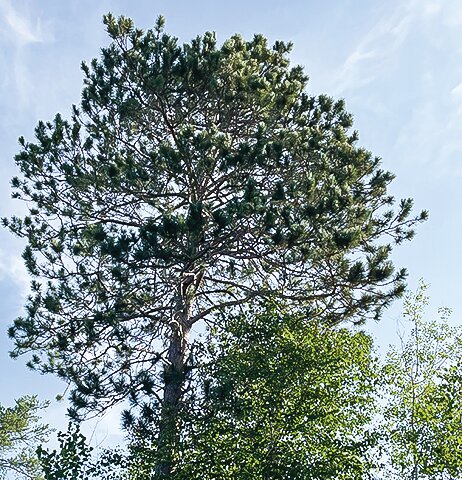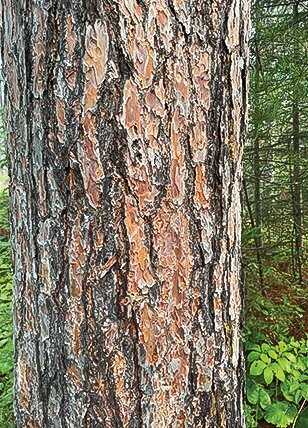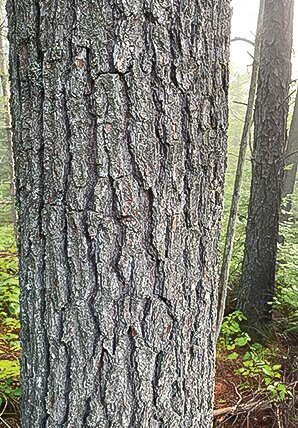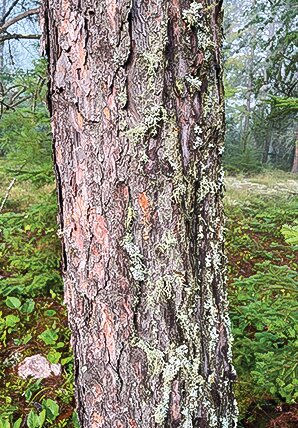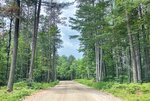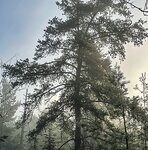Support the Timberjay by making a donation.
RED, WHITE, OR JACK?
Tips for distinguishing the North Country’s three native pines
Ever eat a pine tree? That was the question posed by Euell Gibbons in his 1970s-era cereal commercial. “Many parts are edible,” advised Gibbons, the author well-known at the time for his …
This item is available in full to subscribers.
Attention subscribers
To continue reading, you will need to either log in to your subscriber account, below, or purchase a new subscription.
Please log in to continue |
RED, WHITE, OR JACK?
Tips for distinguishing the North Country’s three native pines
Ever eat a pine tree?
That was the question posed by Euell Gibbons in his 1970s-era cereal commercial. “Many parts are edible,” advised Gibbons, the author well-known at the time for his advocacy of eating wild foods.
Of course, as Gibbons knew well, proper identification of the items on your dinner menu can be important, since while many parts of certain pine trees might be edible, other parts or different species of pine, could make you sick.
I’m not going to suggest that anyone eat a pine tree, or parts thereof, but would you be able to distinguish the native pine trees that commonly grow in our area? I bet most readers can, but I found in my naturalist days that plenty of folks struggle to distinguish our several species of conifers. That includes the three species of native pine found here— the white pine, the red pine, and the jack pine.
Even for the beginner, distinguishing these three pines is relatively straightforward, as each has a foolproof characteristic or two that makes distinguishing them a cinch once you know what to look for.
From a distance, you can tell these three species apart from their shape. Once mature, the white pine (Pinus strobus) has a broad, open appearance, like someone with open arms. The horizontal, spreading nature of the white pine’s branches make them the ideal nest site for large raptors, like bald eagles, which is why the vast majority of eagle nests are found in white pine.
By contrast, the red pine (Pinus resinosa), also known as Norway pine, has a notably oval and relatively dense crown that easily distinguishes it from a white pine. Its needles are also considerably longer and darker green than the needles of a white pine.
The shape of the jack pine (Pinus banksiana) is less consistent and often depends on where they have grown, but always seem to take on a somewhat scraggly appearance. On open, rocky outcrops, they can appear relatively short and squat, while when grown in denser stands, they can be straight and tall, although they typically tilt to one side or the other toward the top of the tree.
These distinctions are easy to see once you’ve learned and practiced them.
Fortunately, up close, the trees can be definitively distinguished by even the rankest beginner.
If you can obtain a branch from a pine, look at the needles. The needles on a pine are attached to the branch in bundles held together by a little sheath and the feathery needles of the white pine come four-or-five to a bundle. Both the red and jack pines come with two needles per bundle, but even here the distinction is easy. A red pine needle is anywhere from four to six inches long and is fairly flexible, while the typical jack pine needle is rarely longer than an inch and a half and is quite stiff.
The branches are also quite different. The branches of the white and red pines are typically thicker and stiffer than a jack pine. Indeed, one characteristic of the jack pine is that its smallest branches are so flexible that you can actually tie them in a knot without breaking them. You wouldn’t be able to do that with a red or white pine. Those pines, unlike the jack pine, don’t range much further north than the Great Lakes. The jack pine, by contrast, grows all the way up to the tree line so its remarkable flexibility is an advantage when it comes to shedding large amounts of snow.
If you’re trying to distinguish tall pines and can’t reach any of the branches, the trunks of each species provide another good clue to their identity. Red pine, in particular, are easy to distinguish by their flaky reddish bark, which develops into large reddish plates as the tree ages.
The white pine has smooth grayish bark when it’s young, but it eventually becomes thick, furrowed, and dark brown or gray as it ages. Jack pine bark is dark brown and flaky but can also become thick and furrowed near the base as it ages.
Cones are another means of distinguishing these three pines, and since the cones are ripening now and the red squirrels are busy harvesting them, it’s a good time to find cones under large pines. The white pine cone is long and relatively narrow, often six inches long or more. The red pine cone, by contrast, is much more roundish and is typically no more than two inches long and nearly as wide.
A jack pine cone will rarely be found on the ground. This is an intensely fire-adapted species and it keeps its cones tightly closed and attached to the tree, often for decades at a time. It takes the heat of a fire to open these cones, which helps this species quickly reseed itself after wildfires. Until that fire comes, the cones accumulate on the tree, where they appear as hard, gray, crescent moon-shaped growths. It’s a fascinating adaptation.
If you haven’t tried distinguishing our native pines before, use these tips to get out and give it a try. Once you start learning the plants that inhabit the North Country, you’ll likely want to continue to learn more.


